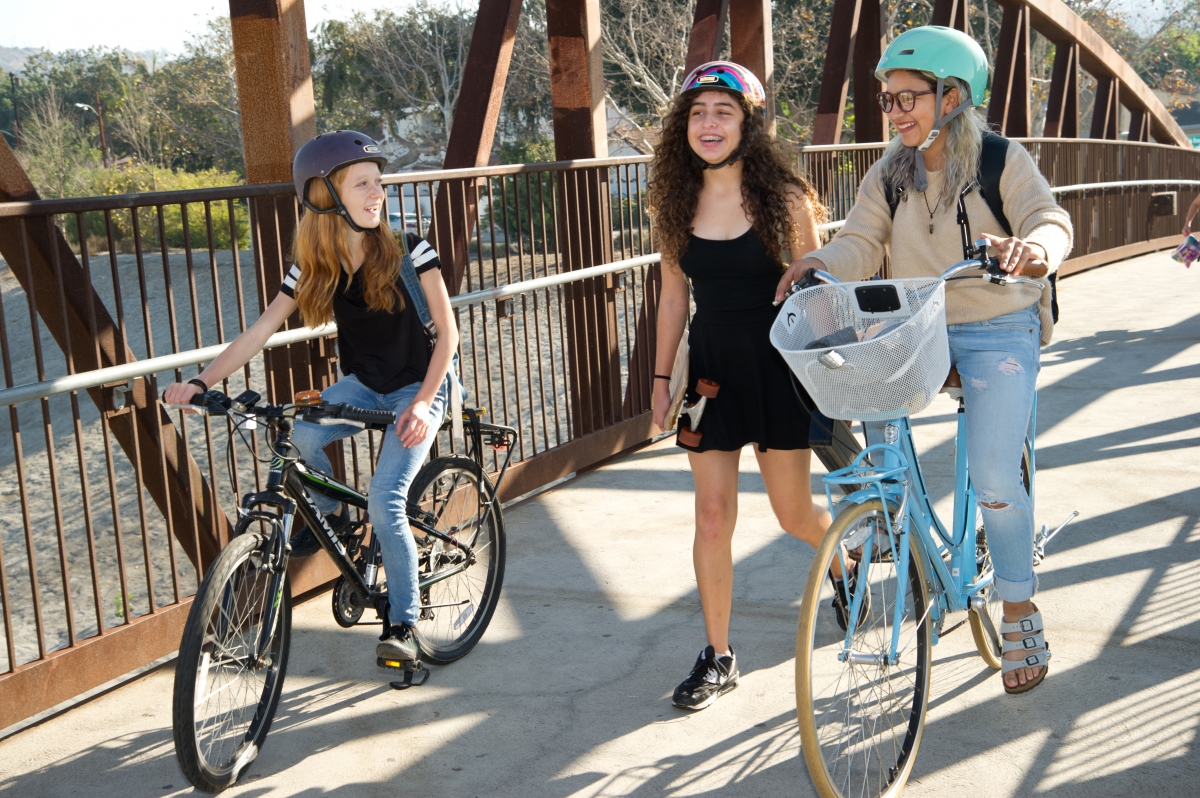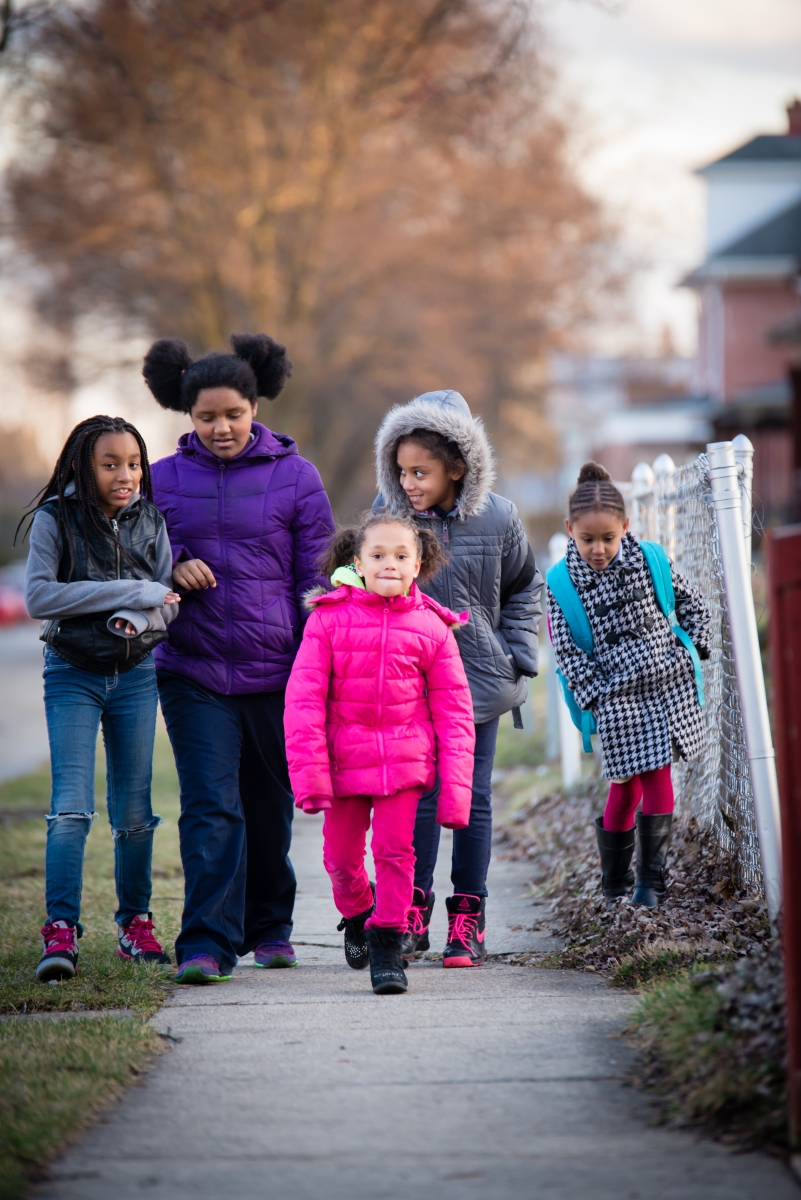
Resource Library
Page 27 of 107 pages. This page shows results 521 - 540 of 2139 total results.
This post was authored by Tiffany Lam

This post was written by research adviser Tiffany Lam.
Webinar
Safety and comfort in public spaces should be the norm. Unfortunately, street harassment exists, with inevitable effects on Safe Routes to School. What does this look like and which communities are affected most by street harassment?
Safe Routes to School in Columbus, Ohio started in the mid-2000s as a cooperative effort that spoke to public health, the Department of Public Services, and the Safe Walks program, involving Safe Routes to School travel plans for a school or a group of a few schools. These efforts brought about mobility studies for a few different neighborhoods. The Ohio Department of Transportation (ODOT) funded SRTS projects at individual schools, but they were also receiving a lot of applications for larger school districts.
Newton, MA's Safe Routes to School program has made many gains since they started roughly ten years ago. Examples are across the board! Not only have they identified more local champions who work with individual schools, but they are also poised to announce a new working school transportation policy developed by an after school committee. The current policy has more of a focus on who qualifies for the bus, and they’ve been asked to develop a policy that promotes walking, biking and taking the bus.
Fact Sheet
Planning a WSB might seem complicated, but resources are available to get you started on the right foot. This handout includes FAQs for starting your WSB, this resource is intended for school adminstrators, principals, teachers, and parents.
Webinar
Safe Routes to School programs across the country know that volunteers are the heart and soul of the movement providing support for walking and biking to school at all levels every day of the school year through all types of challenges and weather.
A week ago, Congress reached agreement on overall spending caps, which would allow for significant increases in defense and domestic spending in FY2018 and FY2019. Their agreement includes an additional $10 billion per year for two years to put towards different kinds of infrastructure investments (broader than just transportation). Congress now has about six weeks to divide those overall increases into the funding allocations for federal programs and agencies.
Toolkit
A Toolkit for Planning and Conducting a Walk Audit
Walk audits can be informal and casual, or can include city councilmembers, traffic engineers, and detailed forms. In this toolkit, we give you the tools to hold your own walk audit that will help you achieve the goals of your community.
Toolkit
Walking one mile to and from school each day is two-thirds of the recommended daily physical activity for children and youth. This guide will help you create maps of recommended routes for students to walk with their families or in groups.
Fact Sheet
Walk audits are a great tool to gather information about street conditions, engage community members, and inform planning and traffic safety projects. Through walk audits, you can help improve walking, health, and quality of life in your community!
The Safe Routes to School National Partnership is pleased to announce that Kaiser Permanente is awarding a two-year grant of $1.26 million to advance Safe Routes to School initiatives and policy nationwide and in specific regions.
Moscow, Idaho is a community of 25,000, located eight miles from Washington State with a bike path that connects the University of Idaho in Moscow to the University of Washington. Initially, active transportation efforts were focused more on enjoyment of the outdoors and connection with schools, with little attention paid to the safety component. This started to change roughly 10 years ago when the University of Idaho partnered with the City of Moscow on the area’s Safe Routes to School initiatives – the city took on engineering with the University covering the rest of the E’s.
On January 30, President Trump delivered his state of the union. A few sentences in his speech referenced the long-delayed infrastructure package, as he called on Congress to pass a bill that would pair any Federal dollars with state, local, and private investments to “build gleaming new roads, bridges, highways, railways, and waterways.”
Research
Built environment factors that promote active school commutes (i.e., proximity to public transport, walkability) should be considered when making decisions about school siting.
Webinar
In too many neighborhoods, local stores carry no fresh produce or other healthy options, but getting to healthy foods is dangerous and inconvenient due to unsafe walking conditions and lack of access to public transit or private vehicles.
Safe Routes to School has grown leaps and bounds in the Phoenix area since the inception of the program. When MAP21 came along, Arizona DOT subcontracted the Safe Routes to School and Transportation Alternatives programs to MPOs and Councils of governments, which kept the ball rolling in the right direction. Phoenix has steamrolled ahead with a dedicated employee who works with 75 schools every year in the spring and fall with various pedestrian and biking events, including some law enforcement education. This work reaches tens of thousands of students each year.
There was a pile-up of legislative priorities in December, and Congress ended up getting a tax bill through but punted action on spending levels, the DACA immigration policy, and stabilizing the health insurance market to 2018. This means that January is now full of deadlines.
Report
This report looks at the cost savings and economic benefits of investments in active transportation and Safe Routes to School—including medical cost savings from improving safety, reducing costs of obesity due to increased physical activity, and increases in economic benefits such as increased rents or property values, tourism revenue, and more jobs.

